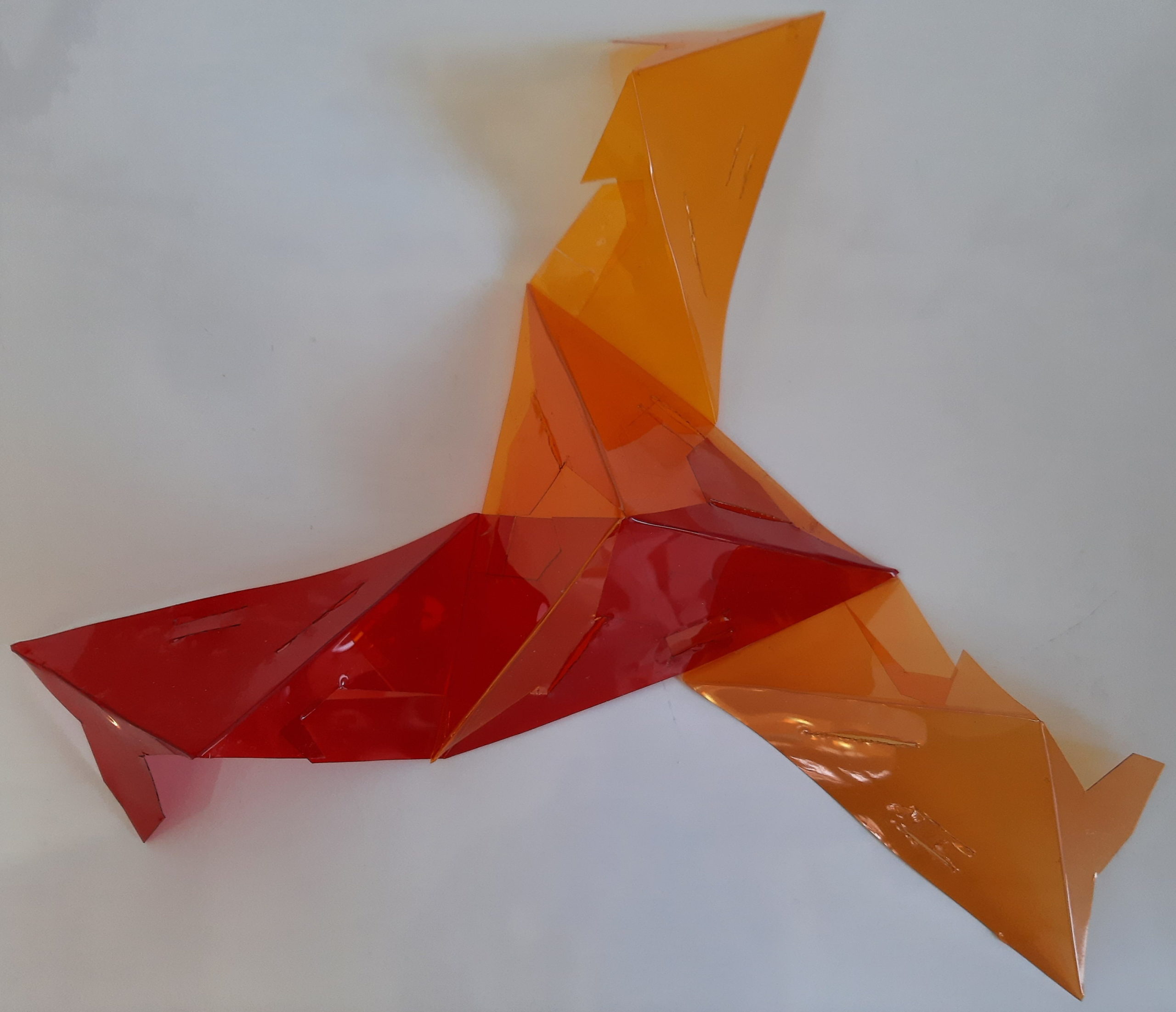Traditional CAD/CAM Software for Mathematical Models
 Facilitator: Glen Whitney
Facilitator: Glen WhitneyThis tutorial provides an introduction to traditional CAD/CAM drawing tools, a class of software that may be unfamiliar to many in the mathematics and mathematical illustration community.
The first session will be joint with Edmund Harriss’ workshop on Mathematical CNC Toolpaths (and held in the CNC Toolpaths Zoom room), so that participants can sample both aspects of CAD/CAM in mathematical contexts and select one track or the other for subsequent sessions.
Note this workshop has a few specific preparation tasks that you should complete beforehand.
The particular perspective of creating materials for mathematical outreach will serve as this workshop’s vehicle for introducing the tools. It will comprise (at least) one 2D project and one 3D project. In particular, participants will model a modular-origami-style unit and produce cut files to allow the automatic production of interlockable units on consumer machines (such as the Silhouette Cameo or Cricut Explore). Sample cut units of their designs will be sent to all participants following the workshop.
As a 3D project, participants will develop rigid hubs that can be used with drinking straws to assemble one or two polyhedra of their choice. (For example, the acute and obtuse golden rhomboids that can tile space aperiodically make a nice target.) Time permitting, we will add features such as internal magnets to allow the resulting models to attach to one another. The resulting hub designs can be exported in formats suitable for 3D printing or even injection molding.
The workshop will use only freely-available, open-source software.
- What prerequisite knowledge or skills will the workshop assume?
There are no prerequisites beyond high-school solid geometry; in particular, no familiarity with CAD/CAM or any specific software is assumed.
- What specific preparation or tasks should participants have completed prior to the beginning of the workshop?
Briefly, participants need to install the required software, choose a modular origami unit to model, and choose a polyhedron or two to model hubs for (the hubs will allow the polyhedra of your choice to be assembled with drinking straws). Details on all of these items have now been posted.
- What outcomes should participants expect to achieve by the end of the workshop?
Students will become familiar with the operations and workflows available in 2D and 3D CAD/CAM programs. They will design a flat, cut analogue of a modular origami unit, several copies of which will be mailed to them. And they will design a hub for assembling drinking straws, which can be 3D printed by a variety of machines or on-line services.
- Will there be specific projects for participants, or should participants have their own projects in mind already?
Lists of possible projects will be provided, but participants may choose their own.
Note this workshop has a few specific preparation tasks that you should complete beforehand.